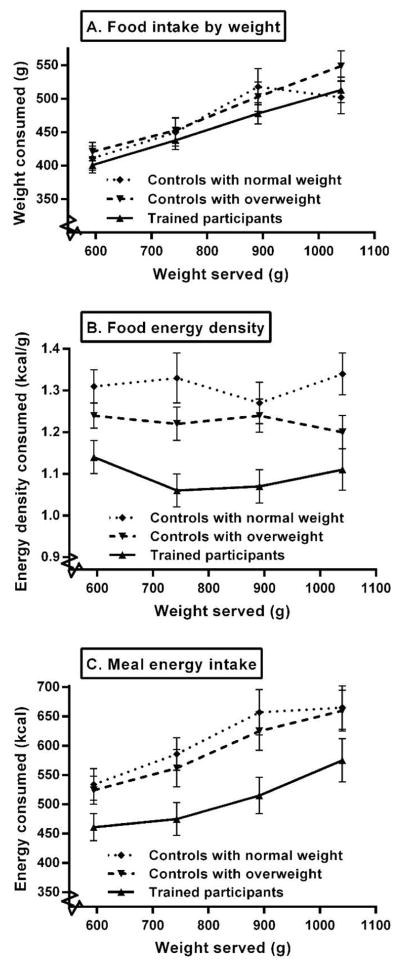Figure 1.
Mean (±SEM) intakes of meals that were varied across 4 portion sizes, for trained participants (n=39), controls with overweight and obesity (n=34), and controls with normal weight: (n=29), as assessed by random coefficients models. Figure 1A: The weight of food consumed significantly increased as portions were increased (P<0.0001), and this effect did not differ across groups. Figure 1B: In trained participants, meal energy density (ED) initially decreased as portions were increased (P=0.0006), followed by an increase (P=0.001); in controls, meal ED was not affected by portion size (both P>0.35). Additionally, across all 4 portions, meal ED was significantly lower for trained participants than controls (P<0.015). Figure 1C: Meal energy intake increased as portions were increased (P<0.0001), and this effect did not differ across groups. However, across all 4 portions, trained participants had a lower energy intake than both control groups (P=0.023), whose intake did not differ.

